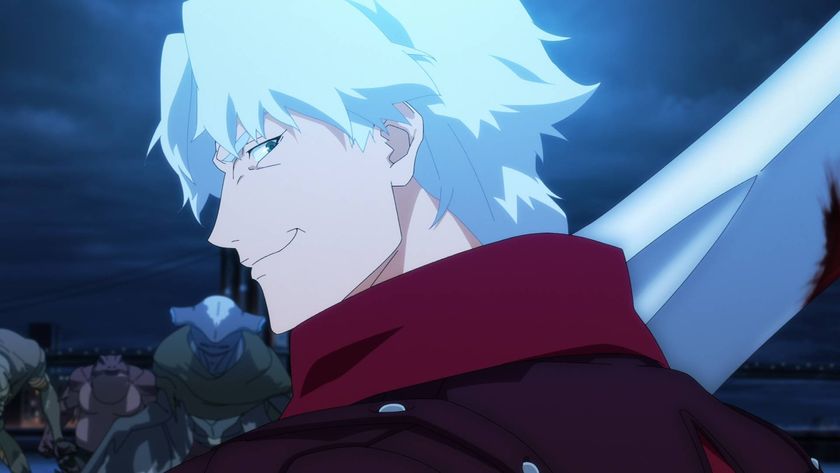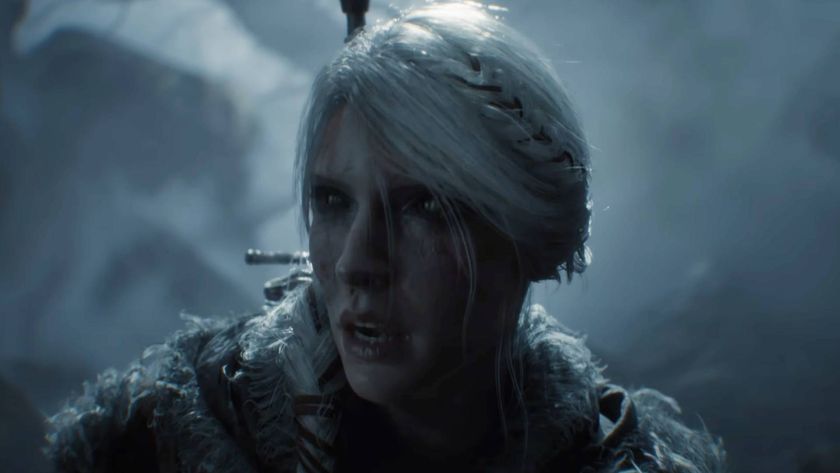You may have read our article about Mega-City Undercover earlier in the week. As a follow-up, we've been lucky to speak to Lowlife artist Simon Coleby so that's everybody associated with the project interviewed now. Here are Simon's answers, for you completists out there!
In Lowlife we follow Mega-City One Judges Aimee Nixon and Dirty Frank as they infiltrate criminal organisations in the roughest parts of the Big Meg. Written by Rob Williams and first appearing in 2004, Lowlife features artwork by Henry Flint and Simon Coleby.
Simon, what was the most exciting thing about drawing Lowlife?
Simon: "The opportunity to play a part in developing an aspect of the Mega-City mythos which has not yet been fully established. And, of course, to play with the rich lunacy of the characters that Rob brought to that environment."
And what was at stake for you personally as an artist with this story?
Simon: "Henry Flint is a superb cartoonist, with such a wonderfully idiosyncratic style that he is an immensely hard act to follow. Apart from looking at his character designs, I deliberately tried not to study his take on the Lowlife too deeply, as I felt that I would become intimidated by the prospect of following what he had established."
And were you influenced by other artists who'd drawn parts of the 2000 AD universe before you?
Simon: "2000 AD was the first comic that I read as a kid, and even now I remember the impact of early Mike McMahon and Brian Bolland strips. Those artists created iconic images that fired my imagination at a young age, and the influence of that has remained with me throughout my career. Mike McMahon, in particular, gives everything that he draws such a fantastically gritty and distressed texture that his environments always seem very real, contrasting with his exaggerated, cartoony draughtsmanship. This is something which really struck a chord when I first saw his work, and I think it shows as a strong influence in my drawings."
What was it like working with writer Rob Williams for the first time?
Simon: "Rob is the only writer whose scripts have made me spontaneously laugh out loud while reading them. He manages to rather uniquely write about the grittiest, dirtiest aspects of Mega-City One, whilst interjecting naturalistic dialogue which wouldn't be out of place in a radio, or television, drama. It's rare that a comic writer scripts dialogue which works perfectly well if read-out-loud, but Rob's very often does ( and yes, I have tried it!). We share a love of ludicrously overwrought heavy metal too, which certainly surfaced in one of the stories we created. If I recall correctly it was a chat about Rammstein which lead to the decision that Dirty Frank, at his most frenzied moment of metal mayhem, would probably start screaming in German... "
Tell us about the characters of Aimee Nixon and Dirty Frank - were they inspired by anybody? How much did you enjoy working with them?
Simon: "In a way I see Aimee and Frank as polar-opposites of each other; Frank is outwardly insane but I always felt that there is a sternly controlled, analytical core to the character. Aimee presents a more restrained and rational face to the world, but she is fundamentally conflicted and neurotic at heart. During my work on Lowlife I particularly enjoyed working with Frank as it's impossible to push the character too far, and I found that I became comfortable drawing him very quickly. I think that his mannerisms and expressions developed and grew as I continued to draw him. I have no idea why it seemed right to add those 'I am 2', children's' birthday badges to his coat, for example, but that kind of thing just fell into place as his personality developed on the page."
Sign up to the SFX Newsletter
Get sneak previews, exclusive competitions and details of special events each month!
"Aimee is a much more complex person, and I'm still not sure that I really defined her as I well as I would have liked to - she's a fascinating, ugly/beautiful character, and with that kind of complexity it often takes quite some time to explore, and become familiar with, all the facets of body language, expression and so on. I try very hard, in my work, to concentrate on atmosphere, and on the 'acting' of my characters. To do this I find that it's usually necessary to empathise with them, to some extent, so that it's second nature to know how they should react facially, or in their movements. I think that I got much closer to this with Frank than with Aimee. Make of that what you will!"
What makes the Wally Squad a good topic to draw?
Simon: "Wally Squad judges are so individual and eccentric that I think there's always the suggestion of a great back-story - these are characters that have much more depth than the uniformed judges. Rob and I speculated a little about Dirty Frank's history, and I think it would have been a great tale to tell. I have no idea if I will ever get to illustrate that story, much as I'd love to, but I do hope that it sees print sometime."
A few years have passed since first working on it, so how do you feel about the stories now?
Simon: "I'm not quite sure that I did Rob's scripts justice, but there are one or two panels that I'm still quite happy with. The final panel of the 2006 story 'He's Making a List' was a favourite of mine. I wanted the drawing to be really loose and spontaneous, then give it a watercolour wash to soften it as an ending to the story. As a rule I'm quite precise in my pencilling, and I tend to work very tightly. For that panel I just grabbed a brush and laid into the picture with virtually no pencil work on the page. It was one of the fastest drawings I've ever done, and I was very satisfied with the way it turned out. And, again, actually chuckling at some of the things in the script, as I was drawing them, made Lowlife a very enjoyable experience."
What's one good reason why people who've never seen Lowlife before should go and check it out in this new collection?
Simon: "Baby ninjas."
What lessons did you learn from Lowlife which have served you well in later comics work?
Simon: "Because Rob injects so much personality into his characters I became very focussed on subtle body language. This, combined with the timing required to get across the comedic aspect of Rob's dialogue, made me concentrate on panel layouts and characters' expressions. It's extraordinarily difficult to draw a panel which is the punch line to a piece of dialogue, without making it look corny or overacted. That's something that I tried to concentrate on in Lowlife, and it continues to be important in my current work."
Thanks Simon!
You can read our original article here . Check out SFX over the summer for more 2000 AD-related goodness. Lowlife appears in Mega-City Undercover , available from March 2008 from bookshops or from www.2000adonline.com for £12.99.
All artwork: 2000 AD, TM and (c) Rebellion A/S
SFX Magazine is the world's number one sci-fi, fantasy, and horror magazine published by Future PLC. Established in 1995, SFX Magazine prides itself on writing for its fans, welcoming geeks, collectors, and aficionados into its readership for over 25 years. Covering films, TV shows, books, comics, games, merch, and more, SFX Magazine is published every month. If you love it, chances are we do too and you'll find it in SFX.

Devil May Cry producer hopes new Netflix anime inspired by Christopher Nolan’s Batman trilogy will show fans that "the villain of your story is the hero of their own story"

Lazarus review: "Unfortunately Cowboy Bebop director's new sci-fi anime never quite melds into a harmonious whole"











